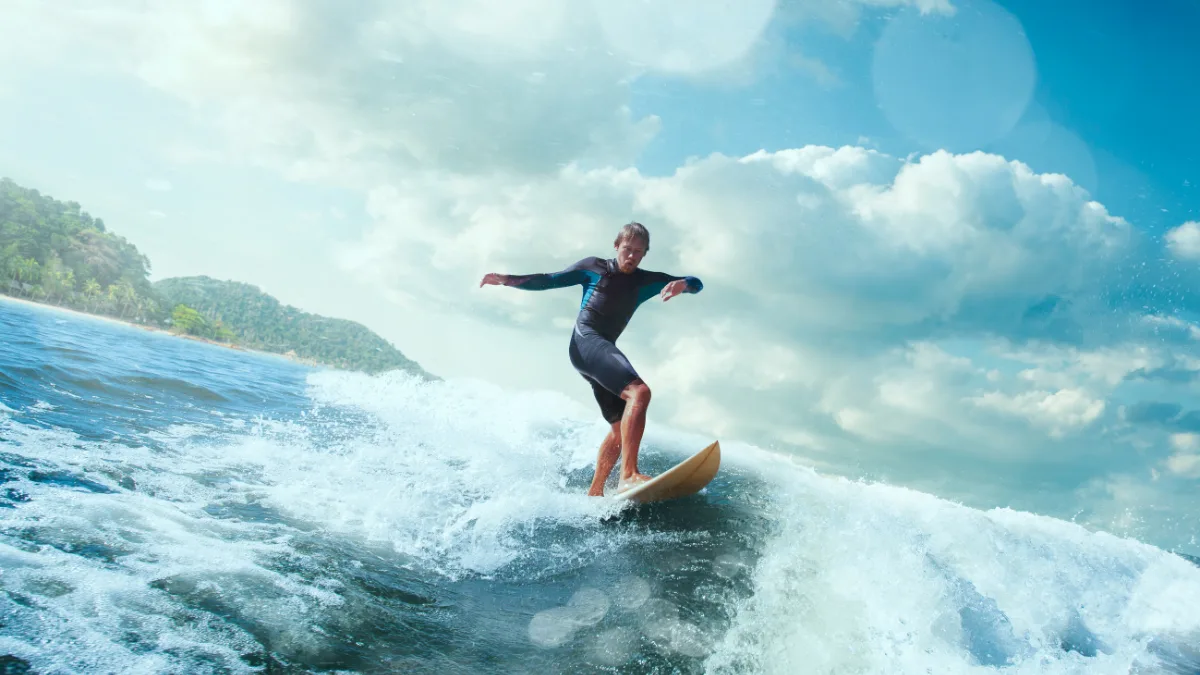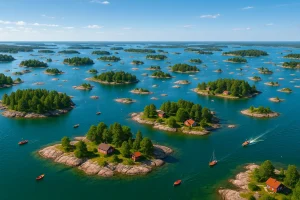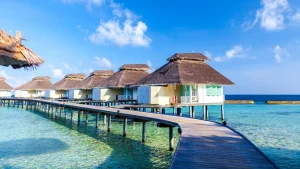Surf in Maldives is a dream for every ocean lover, with crystal-clear waves rolling over coral reefs and golden sunsets painting the sky as this paradise is not only famous for luxury resorts but also for some of the best surf breaks in the world and many travelers now look for Maldives tour packages that include surfing experiences so they can mix adventure with island relaxation and even couples choosing Maldives honeymoon packages are adding surf sessions or charters to their trip which makes their romantic getaway more exciting and unique. Whether you’re a first-timer or a pro, the Maldives offers the perfect wave for you.
What is “Surf in Maldives”
When people say surf in Maldives they mean catching waves on reef breaks around those coral atoll islands and warm water, tropical vibes, some of the most beautiful ocean & sunsets you’ll ever see and waves vary from mellow long walls to hollow, barreling reef breaks. Whether you want adrenaline or just mellow rides, there’s something there.
Best Time to Surf in Maldives (Maldives Surf Season)
Knowing when to go is key.
- Best time: March to October is overall usually prime.
- Within that, the largest, most reliable swells are typically June, July, August of the Southwest Monsoon.
- Shoulder seasons like March-April and October-November provide good surfing in Maldives with less crowds. Swells may be smaller but more reliable and more forgiving.
- Off-peak / low season: November through to February sees less swell, more rain, sometimes winds that mess up the cleaner breaks. Not bad if you don’t need perfect waves.
Best Surf Spots in Maldives for Every Surfer
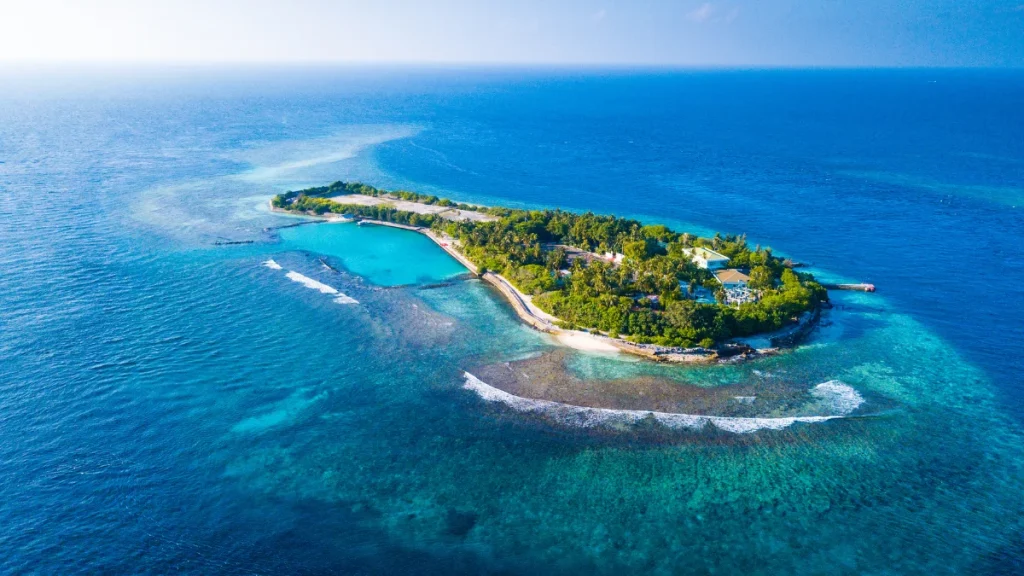
Various atolls, various vibes, various wave types. I’ll divide them up so you can choose according to ability, travelling time and expense.
North Malé Atoll (closest to the airport)
Great if you don’t have weeks to travel.
- Cokes (Cola’s) – fast, hollow right-hand reef break. Not for beginners. Big swells.
- Chickens – left-hander, longer rides, more forgiving. Intermediate/advanced.
- Sultans – classic right-hander, consistent. Can be easier than Cokes.
- Honky’s, Ninjas (Piddlies) – more mellow, good for intermediate-beginners.
- Lohi’s – in front of Hudhuranfushi Resort. Mellow, nice walls. If staying at the resort it’s very convenient.
- Pasta Point – exclusive break, long rides, good quality. If you can stay nearby or at the resort.
Central Atolls (Meemu, Dhaalu, Thaa, Laamu)
Quieter water, fewer crowds, breaks less known but awesome.
- Breaks like Vodi in Dhaalu.
- Ying Yang in Laamu.
- Thaa Atoll has waves like Bowling Alley, Malik’s, Mikado (Inside/Outside).
Southern Atolls (Gaafu Dhaalu, Addu, Huvadhoo, etc.)
If you want remote, raw and less touched surf in Maldives.
- Beacons, Tiger Stripes etc. Very powerful, hollow waves, often best for experienced surfers.
- Five Islands – more forgiving, some breaks good for intermediates.
Surf in Maldives with Charters: Your Ticket to Remote Waves
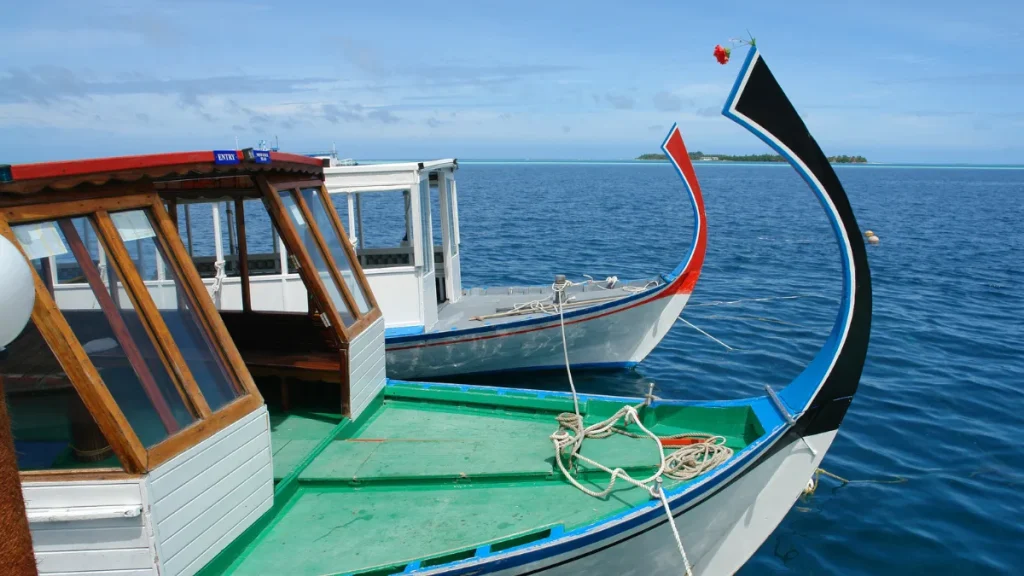
Charters are boats that take you between surf spots, sometimes staying out for days. Pros/cons:
Pros:
- You can reach remote breaks (especially in central & southern atolls) that aren’t accessible easily by land/resorts.
- More flexibility: chase good swell, move with wind, skip crowded spots.
- Often all-inclusive: food, gear, lodging on boat, transfers.
Cons:
- Cost is higher (boat cost, fuel, permits).
- Travel time on water can be tiring.
- Amenities are more basic than luxury resorts.
- Weather and sea states matter more; moving between atolls can be rough.
If your trip is more than 7-10 days and you want variety, surf charters are an excellent way to go.
Maldives Surfing for Beginners
Yes, beginners can surf in Maldives. But you need to pick spots and times carefully.
What beginners should know/do:
- Choose breaks with gentler reef, longer walls, less hollow barrels. Spots like Ninjas / Piddlies, Lohi’s on clean days.
- Surf in Maldives during shoulder or low season for smaller waves. Less intimidating, more forgiving.
- Use surf schools or guided lessons. Local guides know how tides, reef, wind conditions affect safety.
- Gear: reef booties help (reef is sharp). Also leash, sun protection (reef reflect sun too), rash guards.
Surf in Maldives: Local Tips on Safety, Swell, and Weather
- The Maldives Tourism site confirms surfing is fast growing, with known documented breaks and that the best surf season is southwest monsoon (April-October) with biggest waves June-September.
- Swells come from the Indian Ocean, especially from the south and southeast. Reef bottoms dominate many breaks. Tides matter a lot.
- Safety: reefs are sharp; waves break over reef. On low tide some spots are dangerous. Respect local knowledge.
Where to Stay for the Best Surf Spots in Maldives
- Fly into Velana International Airport (Malé, MLE). That’s the main gateway.
- From Malé, depending on where you’re headed: speedboats, domestic flights + boats, charters. Some surf resorts provide transfers.
- Where to stay:
- Resorts with private or exclusive breaks (Pasta Point, Hudhuranfushi, etc.). More expensive.
- Surf camps / surf guesthouses on local islands like Thulusdhoo, Himmafushi — more budget friendly, more “surf culture” vibe.
- Charter boats as lodging.
- Resorts with private or exclusive breaks (Pasta Point, Hudhuranfushi, etc.). More expensive.
- Accommodation cost ranges a lot: local guesthouses vs luxury resorts. Transport to remote atolls increases cost.
Surf in Maldives: Costs and Budgeting Guide
Here’s ballpark so you don’t get shocked:
| Item | Estimate |
| Flight into Malé from big hubs | Depends on where you’re flying from; often one of the bigger cost chunks |
| Local transfer (speedboat / domestic flight + boat) | $30-$200+ depending on distance and remoteness |
| Surf charter (multi-day) | Several hundred to thousands $ depending on level of comfort and duration |
| Resort stay (surf resorts) | Can be $300-500+ per night at luxury level; guesthouses much cheaper ($50-150) |
| Food / guide / gear rental | Moderate to high in resorts; cheaper on local islands and surf camps |
Hidden Surf in Maldives Tips: What Other Guides Miss
While many articles cover spots and seasons, some things are often missing or glossed over. These are things I’m pointing out so you’re prepared.
- Tidal Windows: Many breaks are reef breaks; low tide often risky. Need to check tide charts and plan surf sessions when water is sufficiently deep.
- Wind Direction & Clean Waves: Even if swell is good, onshore wind can ruin the waves. Best conditions often when wind is offshore. Get local forecast (Surfline, Magicseaweed, local forecasts).
- Crowd Factor: In peak season, popular spots (Cokes, Sultans, Pasta) can get crowded. If you want emptier lines, go to lesser-known breaks in Central/Southern atolls or surf early/late in the day.
- Weather / Rain vs Sun: Even during surf season, rainstorms do happen (particularly shoulder months) and don’t imply zero surf, but occasionally surf + rain + winds make it messy.
- Reef & Marine Life Hazards: Sharp coral, sea urchins, occasionally currents. Always query local guides and protective equipment assists.
- Permits / Rules: Some resorts restrict breaks or require surf passes. Also, respecting local island laws (no alcohol on inhabited islands, resource protection).
Surf in Maldives: Best Surf Spots by Skill Level
| Level | Spots to Pick | Things to Avoid Initially |
| Beginner | Ninjas, Piddlies, Lohi’s (on mellow days), some Central Atoll easier waves. Guesthouse or surf camp with lessons. | Big reef barrels (Cokes, Tiger Stripes), low tide reef, overhanging sections, big swells in peak season |
| Intermediate | Chickens, Sultans, Honky’s, some Central and Southern atoll breaks — look for breaks that match comfort with speed + challenge. | Going when swell too big, traveling too far without local guidance, surfing alone in remote areas without backup |
| Advanced | Cokes, Beacons, Tiger Stripes, remote Southern reef breaks, big barrels, long hollow sections. Might want surf charters | Underestimating conditions, ignoring tide or wind, assuming remote = safe, not checking boat scheduling/backups |
What to Pack for a Maldives Surf Trip
- Surfboard(s) that match various wave types: small-fun board, something for bigger barrels and maybe a longer/floater board.
- Reef booties, rash guard, board-shorts. Sun is strong.
- Leash & spare. Reef can break boards.
- Reef safe sunscreen.
- Travel insurance that covers water sports & evacuation.
- Possibly ear plugs, first aid (cuts from reef happen).
Final Word on Surf in Maldives Adventures
Choosing to surf in Maldives is more than just a trip as it’s a memory you’ll carry forever as with crystal-clear waters, perfect reef breaks and golden sunsets, every surf session here feels special and from famous waves like Cokes and Sultans to remote spots reached by charters, the Maldives offers something for every surfer.
Many Maldives tour packages now include surfing which makes it easy to balance adventure with relaxation and even couples booking Maldives honeymoon packages are adding surf lessons or sessions for a fun twist to romance and whether you are a beginner or an experienced surfer, planning your trip around the Maldives surf season ensures you’ll enjoy world-class waves in paradise.

